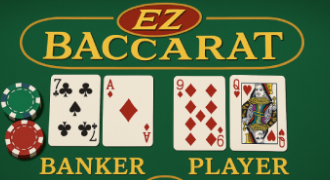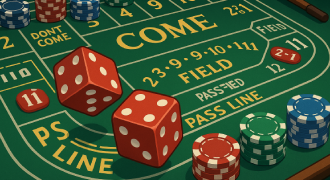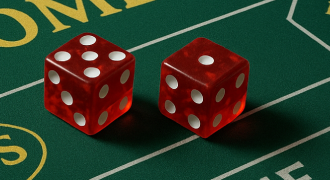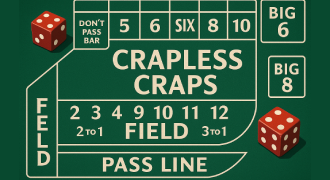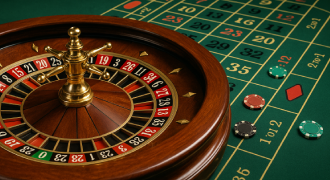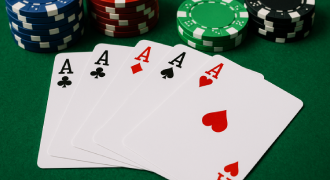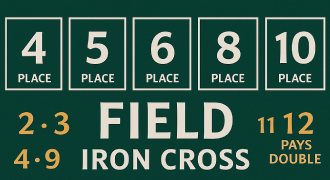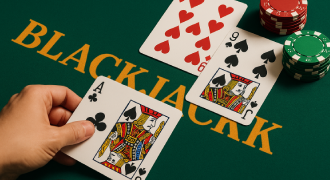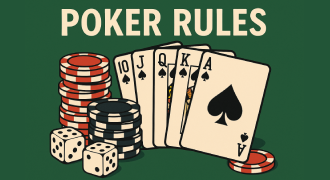Essential Baccarat Rules You Should Know
Welcome to our tables—where the shoe is crisp, payouts are clear, and every hand moves with a reliable rhythm. This article is a practical guide from the casino’s side of the felt. We’ll walk you through the layout, the totals, the automatic draw logic, and the small differences between popular variants. By the end, you’ll recognize each betting option at a glance and understand the full set of Baccarat rules we enforce at real tables and in live studios.
If you’ve ever wondered what are the rules of Baccarat in a live room versus an online studio, you’re in the right place. We’ll present the essentials, add helpful charts, and share steady habits that fit any casino setting.
Core Rules of Baccarat
Baccarat is a quick two-hand game: the Player hand and the Banker hand. You bet on which hand will finish closest to nine, or on a Tie if both totals match. After bets lock, the dealing procedure takes over; you won’t press “hit” or “stand.” These Baccarat rules make the flow calm and predictable, which is why newcomers often feel comfortable after a few rounds.
Values are simple. Aces count as one; 2–9 keep their printed numbers; tens and face cards are zero. Totals use only the last digit of the sum (for example, 15 becomes 5). The core Baccarat game rules also recognize “naturals”: any two-card total of 8 or 9 ends the round immediately with no additional draws. Learn these basics once, and your play will translate to any regulated table.
Here’s a quick-reference table of the core Baccarat rules—perfect for beginners who want the essentials at a glance:
|
Rule 📖 |
Explanation 🃏 |
|
Hands in play |
Player 🤵 vs Banker 🏦 |
|
Goal 🎯 |
Bet on the hand closest to 9 |
|
Card values |
A = 1, 2–9 = face value, 10/J/Q/K = 0 |
|
Total calculation |
Use only the last digit (e.g., 15 → 5) |
|
Natural hand 🌟 |
8 or 9 on first two cards → round ends immediately |
|
Betting options 💰 |
Player, Banker, or Tie |
Baccarat Variants and Rule Differences
Although the engine stays the same, you’ll meet small variations in payout or presentation. We label them clearly on the felt and in the info panel so you can verify settings before your first chip. All follow the standard Baccarat card game rules for values and totals; they mainly differ in how Banker wins are settled or how the table is staged.
Each variant aims to balance speed, theatre, and familiarity. If you’ve played punto banco at a land-based casino, the lobbies you see online will feel almost identical—same pads, same totals, same countdowns. The sections below highlight the most common versions we host.
No Commission Version
No Commission tables remove the classic 5% fee on winning Banker bets and replace it with a posted exception (for example, Banker 6 pays half, or a specific Banker total pushes). Aside from that settlement tweak, the dealing and Baccarat rules drawing are unchanged. Players appreciate the clean 1:1 pay on most Banker outcomes and the faster settlements that follow, enhancing the gaming experience. This version appeals to those who prefer simplicity and clarity in their gameplay.
Mini Baccarat
Mini Baccarat uses the same Baccarat cards rules, but with a compact layout and lower limits. The pace is brisk, the interface is simplified, and it’s friendly for short mobile sessions. Because procedures are slimmed down, new guests can practice without information overload while learning Baccarat draw rules in real time, making it accessible for everyone. Its small-table setup offers an intimate atmosphere that remains efficient and enjoyable.
Stadium Baccarat
Stadium tables stream a single live dealer to many player terminals. You still place chips on Player, Banker, or Tie, but you enjoy personal space, quick re-bets, and on-screen charts that explain totals and payouts. It’s the same math, scaled for larger groups without sacrificing clarity, providing a highly interactive experience. Players appreciate the flexible betting options and the visual aids that help them understand the game better.
How the Scoring System Works
Totals are the heart of the game. We count only the final digit of the sum: 7 + 8 = 15 becomes 5, 9 + 6 = 15 becomes 5, and K + 9 = 9 remains 9. Because tens and face cards are zero, a King never pushes you over nine. This scoring method appears on every felt we run, whether you play a classic pit, a live studio, or a digital RNG table.
If you like mnemonics, remember “drop the tens.” That’s all the arithmetic needed to read any result. Mastering the scoring makes Baccarat rules explained feel straightforward and helps you watch the reveal without second-guessing totals.
Table Setup and Betting Limits
Every layout presents three main pads—Player, Banker, and Tie—plus optional side-bet areas like Player Pair or Banker Pair. Limits are printed on the lobby tile and again on the felt. Beginners often choose a low-limit or mini layout first; regulars step into standard or VIP rooms. We keep key info in view so your stake always matches your Baccarat rules chart plan.
Here’s a quick reference you can screenshot for a session:
|
Area |
What You See |
Why It Helps |
|
Player / Banker / Tie pads |
Large labeled zones |
Fast, accurate chip placement |
|
Paytable note |
Even-money areas & Tie return |
Settlement clarity |
|
Limit banner |
Min / Max per hand |
Bankroll control |
|
Info icon |
Baccarat rules chart and payouts |
In-hand confirmation |
The Third Card Rule Explained
The “third card rule” is a fixed procedure that determines whether one or both sides receive an extra card. You do not choose; the system applies the chart. This keeps pace consistent and results transparent. When guests ask for Baccarat rules casino references, we point to the info icon that shows the compact rules chart everyone at the table follows.
Because many players learn visually, we summarize the most common cases below. These Baccarat third card rules are the same across live and digital rooms unless noted on the felt.
When Does the Player Receive a Third Card?
The Player’s draw decision depends on their total, and it’s straightforward to follow. If the Player’s total is 0–5, a third card will be drawn. If the total is 6–7, the Player will stand. There’s an important exception for a natural 8 or 9, which immediately ends the round without any further action. Here’s a breakdown of the rules:
- Player draws a third card on totals 0–5 (unless a natural 8 or 9 appears).
- Player stands on 6–7.
- A two-card 8 or 9 is a natural; the round ends at once.
These steps are the Player side of the Baccarat draw rules—simple, consistent, and easy to spot in the overlay. Knowing these rules allows players to focus on enjoying the game without worrying about the technicalities. The process ensures a clear, predictable experience every time.
When Does the Banker Receive a Third Card?
Banker logic depends on both Banker’s total and, if drawn, the Player’s third card. You don’t need to memorize the entire matrix; the table handles it automatically. Still, many guests like a compact look-up chart:
|
Banker Total |
Banker Action (considering Player’s third card) |
|
0–2 |
Draws a third card |
|
3 |
Draws unless Player’s third card was 8 |
|
4 |
Draws if Player’s third card was 2–7 |
|
5 |
Draws if Player’s third card was 4–7 |
|
6 |
Draws if Player’s third card was 6–7 |
|
7 |
Stands |
|
8–9 |
Natural; no draws |
This is the essence of formal Baccarat drawing rules, the autopilot that makes the game smooth.
Comparing Player and Banker Bet Rules
The Player wager pays 1:1 and follows the straightforward draw logic you just saw. The Banker wager also pays 1:1, but most classic rooms collect a small commission on Banker wins (or adopt a posted exception in no-commission formats). Despite the fee or exception, Banker remains slightly steadier over long sessions due to the response order in the Baccarat drawing rules.
When you compare the two, look beyond a single hand. Consider session length, limit band, and how frequently you’ll bet Tie. That’s the practical angle for Baccarat rules and strategy—structure beats guesswork.
What Is Considered a Natural Hand?
A natural is a two-card total of 8 or 9. When a natural appears on either side, the round ends immediately—no third card is drawn, and we settle at once. This is one of those Baccarat cards rules that speeds up the shoe and prevents unnecessary extra steps.
Is the Banker Bet Truly the Stronger Option?
Statistically, Banker captures a tiny edge because the Bank side resolves after seeing whether the Player drew. Classic commission or no-commission exceptions offset that advantage so the house edge remains fair. In practice, many players choose Banker as their “main lane” and sprinkle Player for variety.
Frequent Mistakes Players Make
The most common error is chasing results—raising chips suddenly after one loss or ignoring stated limits. A steady unit size smooths variance and keeps your focus on the routine. Another frequent misstep is treating the Tie like a main bet. It pays more but occurs less often; we recommend using it sparingly.
Finally, some guests forget to check which commission model they’re sitting at. Whether it’s classic 5% or a posted exception, this detail changes your long-run expectation. Read the banner before your first chip; it’s part of responsible rules for Baccarat play.
Before playing Baccarat, learn all the rules
We encourage every guest to skim the overlay once per session. It shows totals, the third-card chart, payouts, and minimum/maximum stakes. If a friend asks what are the rules of Baccarat right before the countdown, point to that icon. You’ll both play with confidence, and the table will run faster.
Think of this section as Baccarat rules explained in one sentence: pick your outcome, let the chart drive the draw, and confirm payouts on the felt. When in doubt, ask the host—we’re trained to keep the pace smooth and the answers short.
FAQ
Who is responsible for dealing cards in Baccarat?
A trained dealer (or live host) manages the shoe, executes the Baccarat drawing rules, and announces totals. In digital rooms, a certified RNG simulates the deal using the same Baccarat game rules you see on felt tables. Either way, settlement follows the posted payout model without delay.
Can both the Banker and Player draw additional cards?
Yes, but only according to the fixed Baccarat third card rules. Player is evaluated first; Banker then draws or stands based on its total and the Player’s third card (if drawn). You don’t decide mid-hand; the system applies the procedure automatically.
What exactly is a natural hand in Baccarat?
A two-card 8 or 9. When a natural occurs on either side, we stop the draw phase and settle immediately. This rule keeps momentum high and appears prominently in our Baccarat rules chart.
How many decks are typically used in the game?
Six or eight decks are most common in live and online rooms. Deck count doesn’t change the rules for Baccarat, but it can shift the fine points of house edge and pace. We print shoe size on the table info so you can compare rooms.
Do the rules stay consistent across all Baccarat versions?
Core values and the Baccarat card game rules remain constant: A=1, 2–9 face value, 10/J/Q/K=0, last digit counts, naturals end the round. Payout handling can differ (classic commission vs. no-commission exceptions), and layouts vary (Mini or Stadium), but the essential Baccarat draw rules do not change.

